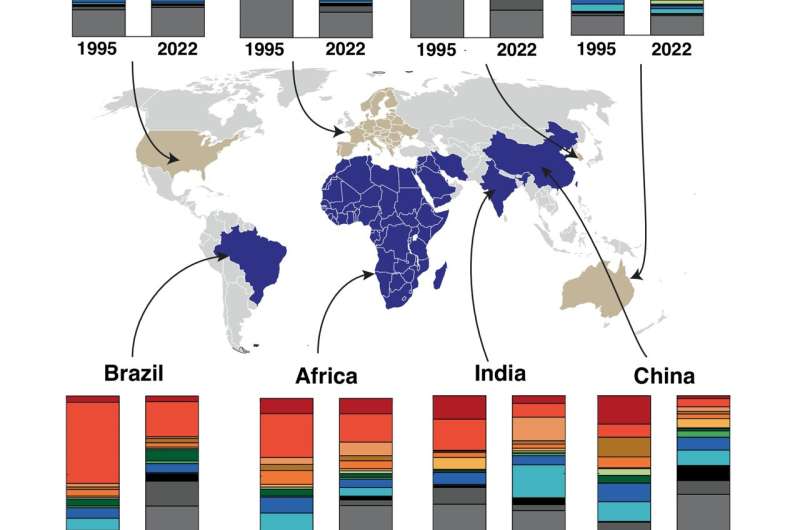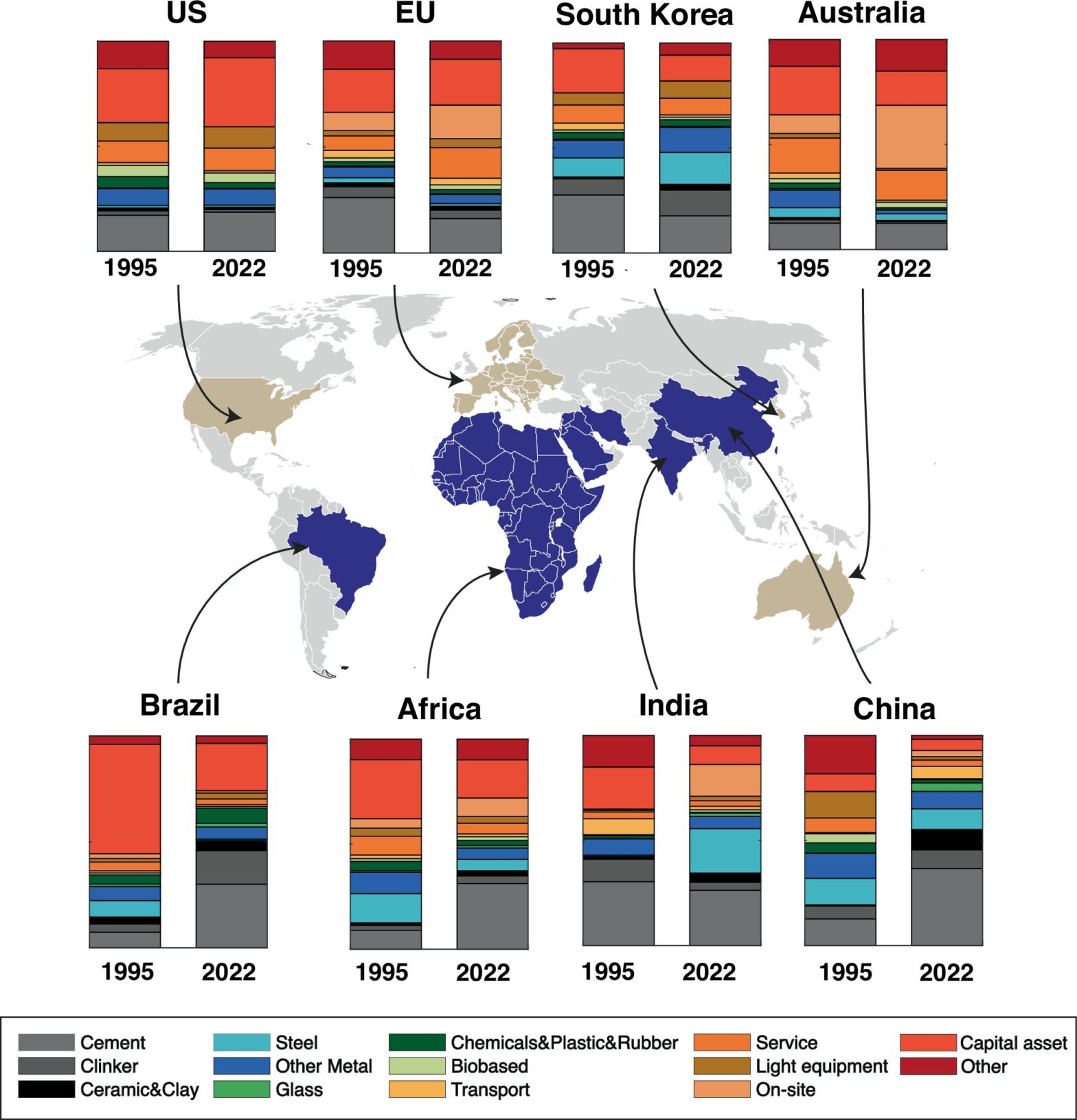
Comparison of construction industry carbon footprint composition for typical countries/regions in 1995 and 2022. Photo credit: Communication earth and environment (2025). DOI: 10.1038/s43247-025-02840-x
As the world marks the United Nations' World Cities Day on October 31 – a call to make cities more sustainable – a new international study has been published in Communication earth and environment warns that the global construction sector's carbon footprint will double by 2050, which could undermine efforts to meet the Paris Agreement's climate goals.
In 2022, more than 55% of the construction industry's CO2 emissions came from cementitious materials, bricks and metals, while glass, plastics, chemicals and bio-based materials contributed 6% and the remaining 37% came from transport, services, machinery and on-site activities.
Lead author Chaohui Li from Peking University summarizes: “The study shows that the construction sector is now responsible for a third of global CO₂ emissions, up from around 20% in 1995. If current trends continue, the earliest the sector can exceed the carbon budget of 2°C per year is 2040.”
The forecasts are alarming
Based on past data, various future emissions scenarios were projected. In the business-as-usual scenario, the carbon footprint of the construction industry alone will exceed the annual carbon budget for the 1.5°C and 2°C targets over the next two decades, not taking other sectors into account.
“Between 2023 and 2050, cumulative construction-related emissions are expected to reach 440 gigatons of CO₂. This is enough to use up the entire remaining global carbon budget for 1.5°C,” explains co-author Prajal Pradhan, a professor at the University of Groningen in the Netherlands.
The study shows a clear shift in emissions from industrial to developing regions. In 1995, high-income countries produced half of construction emissions. By 2022, emissions in these economies had largely stabilized, while growth in developing regions was increasingly driven by reliance on carbon-intensive materials such as steel and cement. At the same time, the use of bio-based materials such as wood has declined, highlighting the missed opportunity for low-carbon alternatives.
Call for a material revolution
The authors call for a global “materials revolution” – a fundamental shift away from carbon-intensive building materials towards low-carbon, circular and bio-based alternatives such as engineered wood, bamboo and recycled composites. Their analysis shows that cement materials, bricks and metals alone now account for more than half of the sector's emissions, highlighting the urgent need to reinvent the way the world builds.
“The challenges and solutions for decarbonizing construction are not uniform around the world. In order to bring about comprehensive changes in the supply chain, structural changes in material terms are ultimately required that reduce the dependence on traditional materials such as cement, steel and bricks while exploring new alternatives,” explains co-author Jürgen Kropp from the Potsdam Institute for Climate Impact Research (PIK).
The authors also argue that high-income regions should lead the way through innovation, circular design and stricter regulation, while developing regions – where most new construction will occur – need targeted financial and technological support to move directly to sustainable building practices.
Without such material transformation, the study warns, the construction sector alone could consume the entire remaining carbon budget for the 1.5°C target over the next two decades. A coordinated global effort to spread low-carbon materials and redesign building systems is therefore essential to keep climate commitments within reach.
Global challenge
As the world continues to rapidly urbanize, reducing the environmental impact of the construction sector will be critical to creating sustainable and climate-resilient cities. The study provides the most comprehensive global analysis of construction emissions to date, covering 49 countries and regions and 163 sectors between 1995 and 2022.
“Humanity has literally backed itself into a corner with steel and cement,” says IIASA Director General Hans Joachim (John) Schellnhuber. “To achieve the Paris Goals, we must reinvent the very materials that shape our cities. A global materials revolution based on circularity, innovation and collaboration can transform the construction sector from a climate problem to a cornerstone of a sustainable and resilient future.”
Further information:
Chaohui Li et al.: The carbon footprint of the construction sector is expected to double globally by 2050. Communication earth and environment (2025). DOI: 10.1038/s43247-025-02840-x
Provided by the International Institute for Applied Systems Analysis
Quote: The global construction carbon footprint is expected to double by 2050 (2025, October 27), retrieved October 27, 2025 from https://phys.org/news/2025-10-global-carbon-footprint.html
This document is subject to copyright. Except for fair dealing purposes for private study or research, no part may be reproduced without written permission. The content is for informational purposes only.
